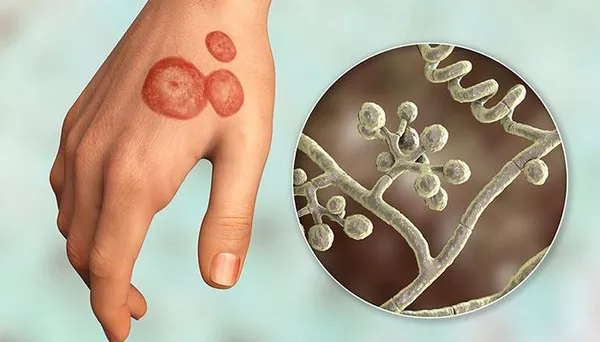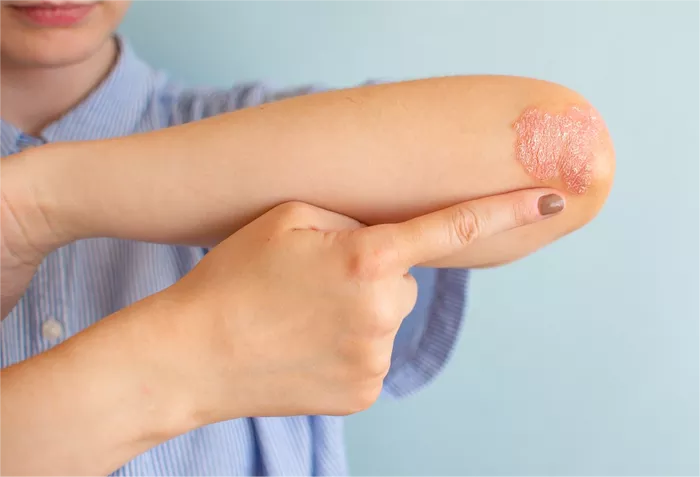Ringworm is a common fungal infection that can affect the skin, scalp, and nails. It’s caused by a fungus, not an actual worm, and can be passed from one person to another through direct contact or contaminated surfaces. While ringworm is treatable with antifungal medications, some people may choose not to seek treatment or may not recognize the symptoms early on. In this article, we will explore what happens when ringworm goes untreated and the potential consequences of leaving it alone.
Understanding Ringworm
Ringworm, also known as tinea, is a skin infection caused by a group of fungi that thrive on the dead tissues of the skin, hair, and nails. It can appear in different areas of the body, and the symptoms may vary depending on where the infection occurs. Common areas for ringworm to affect are the scalp, feet (athlete’s foot), groin (jock itch), and nails.
Symptoms of ringworm include red, itchy, scaly patches on the skin that may form a ring-like shape, hence the name “ringworm.” These patches can be raised and may have blisters or pustules around the edges. The affected area is often itchy, and scratching may make the condition worse.
What Happens When Ringworm Is Left Untreated
While ringworm can often be managed with over-the-counter antifungal creams or medications, leaving it untreated can lead to several problems. In this section, we will explore what can happen if ringworm is not treated in a timely manner.
The Infection Can Spread
One of the primary concerns when ringworm is left untreated is the potential for the infection to spread to other parts of the body. Fungal infections thrive in warm, moist environments, which means that ringworm can easily spread to nearby skin or even other people through direct contact.
If left untreated on the skin, the infection may expand in size, forming larger patches. In some cases, the fungus may spread to the scalp, causing hair loss or to the nails, leading to thickened, discolored, and brittle nails.
In addition, ringworm is contagious. If left untreated, the infected person could unintentionally spread it to others through physical contact or by sharing contaminated items such as towels, combs, or clothing.
The Infection May Become More Severe
Untreated ringworm may lead to more severe skin problems. As the infection persists, it can cause increased redness, inflammation, and swelling. The affected area may become more painful, especially if it becomes infected with bacteria. This can happen if the skin is repeatedly scratched, leading to breaks in the skin that allow bacteria to enter.
In some cases, untreated ringworm can lead to the development of cellulitis, a bacterial skin infection. Cellulitis can cause symptoms such as fever, redness, and warmth around the affected area, which requires more intensive treatment.
Scarring and Skin Damage
When ringworm is not treated promptly, it can cause permanent damage to the skin. The prolonged presence of the fungus can result in scarring, especially if the infection is scratched or irritated. Over time, the skin may become thickened or discolored.
In severe cases, untreated ringworm can result in changes to the texture of the skin, leaving it rough and uneven. The skin may also become more vulnerable to other infections, as the natural protective barrier is compromised.
Hair Loss
Ringworm infections on the scalp can cause hair loss. The fungus attacks the hair follicles, which may lead to hair breaking off or falling out. When untreated, the infection can cause widespread hair loss in the affected area, leaving bald patches that can be difficult to treat.
As the infection progresses, the scalp may become more inflamed, and scabs or crusts may form. The longer the ringworm goes untreated, the harder it becomes to restore the hair to its natural state.
Fungal Infections Can Become Chronic
When ringworm is not treated or managed, it can become a chronic issue. Chronic ringworm may not respond well to over-the-counter treatments, and prescription antifungal medications may be required to clear the infection.
The longer the fungal infection remains untreated, the harder it may be to treat. Chronic ringworm can be resistant to medications and may continue to cause symptoms such as itching, redness, and flaking, even with ongoing treatment. This can be frustrating and may affect a person’s quality of life.
Increased Risk of Secondary Infections
Another significant risk of leaving ringworm untreated is the possibility of developing secondary bacterial infections. Scratching the itchy, irritated skin caused by ringworm can create breaks in the skin, making it easier for bacteria to enter and cause additional infections.
A secondary infection can lead to more severe symptoms, including fever, swelling, and pus-filled blisters. These infections may require antibiotics or other treatments to manage. In some cases, untreated secondary infections can lead to more serious conditions, like sepsis, which is a life-threatening response to infection.
Difficulty with Diagnosis and Treatment
When ringworm is left untreated for a long period, it can make it harder to accurately diagnose the infection. In some cases, untreated ringworm can resemble other skin conditions such as eczema, psoriasis, or bacterial infections. This can cause confusion for healthcare providers and delay proper treatment.
If the infection has become widespread or more severe, treatment options may be more aggressive and may require oral antifungal medications. The longer ringworm goes untreated, the more challenging it may be to clear the infection completely.
Potential for Recurrence
Even after treatment, untreated ringworm can lead to a higher likelihood of recurrence. If the fungus is not completely eradicated, it can come back, leading to another infection. This can be frustrating, as recurrent ringworm may require more extensive treatment to manage.
The recurrence of ringworm is more likely if proper hygiene practices are not followed. It is essential to follow through with treatment and maintain good hygiene to prevent the fungus from spreading or coming back.
Preventing the Spread of Ringworm
One of the best ways to prevent the complications of untreated ringworm is to seek treatment as soon as possible. Early intervention can stop the infection from spreading and prevent the development of more severe symptoms.
To prevent the spread of ringworm, individuals should:
Avoid Direct Contact – Avoid physical contact with others until the infection is treated and cleared.
Keep the Affected Area Clean and Dry – Fungi thrive in warm, moist environments, so keeping the affected area clean and dry can help prevent the spread of the infection.
Use Antifungal Medications – Over-the-counter antifungal creams, powders, or oral medications can effectively treat ringworm. If symptoms persist, seek medical advice from a healthcare provider.
Disinfect Shared Items – Avoid sharing items like towels, combs, or clothing, as these can spread the infection to others.
Practice Good Hygiene – Regular washing of the hands and body with soap and water can help prevent the spread of ringworm.
Conclusion
Ringworm is a common yet treatable fungal infection, but when left untreated, it can lead to a variety of complications. These include the spread of the infection to other parts of the body, secondary bacterial infections, hair loss, scarring, and chronic infection. To prevent these issues, it is important to seek treatment for ringworm as soon as symptoms appear.
By recognizing the symptoms of ringworm early and seeking appropriate treatment, individuals can avoid the potentially serious consequences of leaving the infection untreated. Practicing good hygiene and avoiding contact with others until the infection is cleared can help prevent the spread of the fungus and ensure a quicker recovery.
Related topics


























